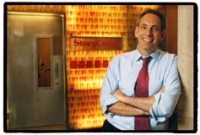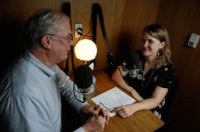
Some of you have asked me why we still have information on our website about “going digital,” but clearly the fact that we still receive newly recorded audio on “old-fashioned” cassette tapes tells me that some people just don’t understand the importance of upgrading technology (on a lot of levels). After 44 years in business, we finally took the “tape” out of our name, because it’s all about the audio!
Today I’m writing about more than “going digital,” but I will also touch upon recording habits in general. Remember, just because you’re recording digitally does NOT mean that you will automatically have broadcast quality audio. (WHAT?! You’re thinking, ‘it’s digital, so it has to be better quality.’) There’s a lot involved in recording, and as the person conducting the recording, you need to stop and think about the details of recording for more than a couple of seconds. That’s right, we know that some of you already know these things, but do you truly take the time to learn your device before using it? I know that’s a very personal question, so think about it for a moment. You don’t have to share.
The quick points to remember:
First and foremost, it’s now 2011, so use a digital recorder! You can walk into any electronics store, or jump online and find one. Just do some research first. Remember, in 2004, 90 % of our clients used analog equipment to record their interviews. Now in 2011, 95% of our clients use digital equipment to record their interviews. You’ll have immediate access to your audio recording. Volume too low? There’s software for you to give the file a quick boost to increase the sound quality. Is your transcriptionist next door or across the country? It doesn’t matter where they are located, because you can upload your audio to them, and still have access to listen your audio. Imagine never having to spend shipping dollars again!!
Clearly the facts demonstrate there’s been a near total reversal in the analog vs. digital battle. Remember, your transcripts are only as good as the audio your transcriptionist receives, and better quality audio will save time and save those all important dollars in your budget. Again though, just remember, it’s more than just “going digital”!
You’ve purchased that device, but you really don’t want to delve into the box with the paperwork and all sorts of wires that are tucked neatly inside. Read the paperwork, and use the wires. Of all the wires in the box, use an A/C power-supply – it might be 2011, but batteries die quickly, so plug in when you can. For those times that you forgot it at home, bring plenty of backup batteries!! Seriously, go buy stock in the major brands, because you will always want to have an ample supply of batteries quickly within reach! You never know when you’ll have to record those unexpected longer interviews. Think of it as practicing “safe recording”!

Now you’re sitting there ready to hit the record button, but stop and check recording volume regularly. I can’t tell you how many interviews we get where the recording levels are so low you can barely hear the person, so don’t forget to check those recording levels beforehand. If your recording device has meters, refer to them, but also be sure to listen to the audio levels with headphones at the start of the interview session.

Another important piece of equipment to use is an external microphone. Different situations require different types of microphones, so you’ll need to do a little studying up on what your recording environment needs. If you’re able, try more than one external microphone among the group, to be sure you have properly mic’d all of your speakers. This is especially important for any group larger than 3 individuals, and be sure to place these microphones as close as possible to the people who are speaking. Sitting at a long table with people at both ends of the table? Think about how the person at the end of the table will sound if there is only one microphone in the middle of the table. Murphy’s law also says that person will be your most verbal in the group. Conducting a one-on-one interview? Drop into Radio Shack beforehand, and grab a lapel mic. The difference in recording quality is remarkable, and you’ll thank yourself later (as will your transcriptionist).
Don’t forget about the longevity of your recording for your archives! Your transcriptionists do not require large archival files for transcribing, they just require some good audio to hear those words clearly. On that note, if you’re going to be storing these recordings for archival posterity,
make sure you do your research on the latest technological advances in formats for saving your audio files. .wav? b-.wav? .mp3? Spend the time,
do your research, and know the facts on digital audio longevity. (
See our previous blog on thinking beyond the shoebox.)
For a more detailed read, look over our recording tips page, and check out some of the other service providers we recommend as well.
Always remember your ultimate goals when you’re recording. If you’re going to have your audio transcribed, you want the best recording possible, so give your transcriptionists audio that they can transcribe both fast and accurately! If you can believe it, we’re telling you to spend a little more up front, that will save you money on a service we provide. Go figure…



















